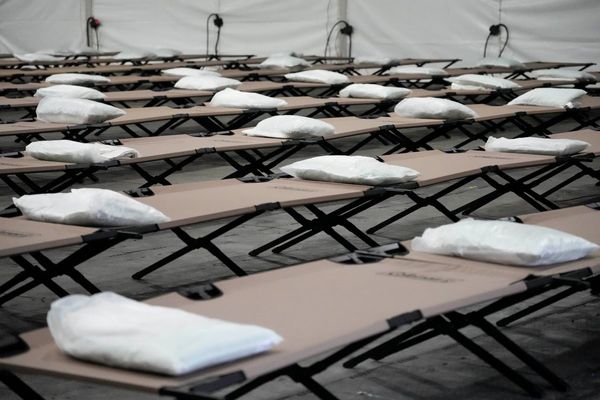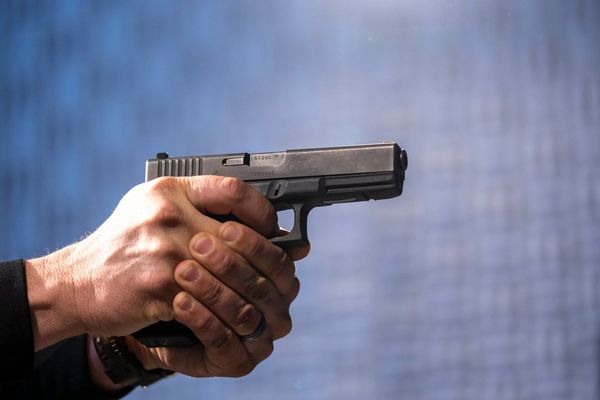
China’s national defence ministry has accused the Australian defence force of “spiteful and provocative actions” as it brushed off the accusation that its warship had shone a laser at an Australian surveillance plane.
But the Australian government hit back on Tuesday, confirming that the Australian plane had dropped buoys in the water to detect acoustic signals but only after the laser was detected. It said the Royal Australian Air Force had acted “within international law at all times”.
The Australian government had demanded an explanation from Beijing over a “dangerous, unprofessional and reckless” incident last Thursday in which it said a People’s Liberation Army Navy (PLA-N) warship had used a laser to illuminate an Australian P-8A Poseidon surveillance aircraft.
The Australian aircraft had been tracking two PLA-N vessels that were sailing east through the Arafura Sea, north of Australia.
A new statement issued by the China’s national defence ministry on Monday did not address the claim of the laser use in any detail.
Instead, the statement said the PLA-N vessel “maintained safe, normative and professional operations” and accused the Australian side of spreading “false information” and making an “irresponsible claim”.
The ministry also made two claims of its own, including that the Australian P-8A surveillance aircraft had “approached the airspace” over the PLA-N vessels “with the nearest distance of only 4km”. A ministry spokesperson said that was “very close”.
The second claim was that the Australian aircraft had cast a sonar buoy into the water around the Chinese vessel. Such a device – also known as a sonobuoy – can be used to gather acoustic information and help detect submarines. An image released by China’s national defence ministry shows a triangular orange buoy in the water.
The ministry’s spokesperson, Senior Colonel Tan Kefei, accused the ADF of “spiteful and provocative actions” that would “undoubtedly result in misunderstanding and threaten the safety of aircraft, vessel and personnel of both sides”.
“China is firmly opposed to these actions by the Australia,” he said.
He called on Australia to “stop such provocative and risky actions” and “avoid negative effects on the relationship of the two countries and two militaries”.
Australia responded quickly to the claims, with Defence issuing a new statement on Tuesday saying surveillance activities were “conducted in a disciplined and safe manner” and the use of sonobuoys was “common practice”.
Such devices were used “to collect passive acoustic data on environmental activity as well as surface and sub-surface contacts” and did not pose any hazard to shipping, the Australian statement said.
“No sonobuoys were used prior to the PLA-N vessel directing its laser at the P-8A aircraft on 17 February,” it said, pushing back at Beijing’s implication that the use of them could be seen as provocative.
“Some sonobuoys were used after the incident but were dropped in the water a significant distance ahead of the PLA-N vessel.”
The statement added: “Australia does not engage in the spread of misinformation or disinformation.”
Earlier, a Defence spokesperson said that at the time of the laser incident the RAAF plane was about 7,700m from the PLA-N vessel and flying at an altitude of 457m.
The spokesperson confirmed that “the closest the P-8 flew to the PLA-N vessel was approximately 3,900m” but said this was a “standard flight profile” for a visual inspection of a surface vessel.
The prime minister, Scott Morrison, said the Australian surveillance aircraft was “exactly where it was allowed to be, doing everything they were allowed to do and keeping eyes on those who are coming into our exclusive economic zone”.
“They were doing their job as they do every single day and we make no apology for where our surveillance aircraft are looking after and protecting Australia,” Morrison told reporters on Tuesday.
The prime minister said the use of the laser was “extremely disappointing” and required a full explanation from Beijing, “not for it to be dismissed or shunted off or some of the usual responses that we get”.
The independent South Australian senator Rex Patrick said the laser incident was “unprovoked” and “unquestionably an aggressive act, intended to intimidate”. He called on the government to “declare China’s defence attaché in Canberra persona non grata and require him to leave Australia without delay”.
“The Chinese government’s refusal to accept fault for this serious incident and their spurious claim that Australia is ‘spreading malicious disinformation’ requires an emphatic response from the Australian government to register just how unacceptable China’s behaviour has and continues to be,” Patrick said in a statement.
Senior Australian diplomatic staff in Beijing have raised Thursday’s incident with China’s ministries of foreign affairs and national defence. Officials in Canberra have also raised it with the Chinese embassy.
The Australian government first disclosed the laser incident in a statement issued late on Saturday by Defence, which said the “unprofessional and unsafe military conduct” could have “endangered the safety and lives of the ADF personnel”.
Morrison quickly declared it to be an “act of intimidation” and the Labor leader, Anthony Albanese, also characterised China’s actions as an “outrageous act of aggression” and “a reckless act”.
Labor has sought a briefing from the government on the incident, which has emerged as the latest flashpoint in the increasingly strained relationship between Australia and China. Morrison has cited the incident as he ramps up pre-election rhetoric about national security.







